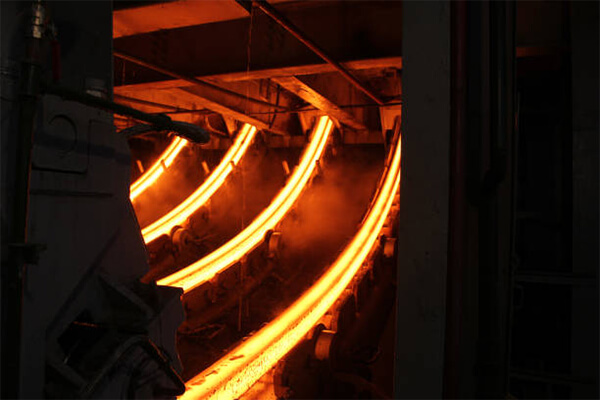Billet Casting
Billet casting is an important part of the steel production process. It involves casting the molten steel produced in the steelmaking furnace into billets of a certain shape and size through specific processes and equipment. The following is a detailed analysis of billet casting:

1. Definition and use of billet
Billet is the product obtained by casting the molten steel produced in the steelmaking furnace, and is the raw material for various steel rolling mills. Billets are widely used in construction, machinery manufacturing, automobile industry, shipbuilding and other fields, and are the primary form of steel manufacturing.
2. Raw materials for billet casting
The main raw materials for billet casting include iron ore, scrap steel, limestone, etc. Among them, iron ore is the most critical raw material, scrap steel is used for recycling, and limestone is used for slag making and desulfurization. These raw materials need to go through screening, weighing, mixing and other steps to ensure stability and quality during the smelting process.
3. Production process of billet casting
1. Melting: Melting is one of the key links in the production of billets. Its purpose is to melt the raw materials and remove impurities. Melting is divided into many methods, such as blast furnace method, steelmaking furnace method, electric furnace steelmaking method, etc. Among them, the blast furnace method is the most common method, which uses coke as a reducing agent to reduce iron ore into molten iron, and adds an appropriate amount of scrap steel and alloying elements for adjustment.
2. Casting: Casting is the process of pouring molten steel into a mold to form a billet. Before casting, it is necessary to ensure the preheating of the mold and the uniform application of the coating to improve the surface quality of the billet and reduce the occurrence of defects. During the casting process, parameters such as temperature, pouring volume and casting temperature need to be strictly controlled. Commonly used casting equipment includes continuous casting machines and static pressure casting machines.
3. Cooling: After casting, the billet needs to go through a certain cooling process to achieve the required strength and hardness. During the cooling process, the cooling speed and cooling method need to be controlled to avoid defects such as cracks and deformation. Commonly used cooling equipment includes water cooling systems and water spray cooling systems.
4. Quality control of billet casting Quality control is crucial during the billet casting process. In order to ensure the quality of the steel billet, a series of quality control measures need to be taken, including:
1. Raw material quality control: ensure the quality and stability of the raw materials, and avoid using raw materials containing too many impurities and harmful elements.
2. Melting process control: strictly control parameters such as temperature, time and atmosphere during the melting process to ensure that the composition and temperature of the molten steel meet the requirements.
3. Casting process control: control parameters such as temperature, pouring volume and casting temperature during the casting process to ensure that the shape and size of the steel billet meet the requirements.
4. Cooling process control: control the cooling speed and cooling method to avoid defects such as cracks and deformation.
5. Testing and inspection: perform appearance inspection, chemical composition analysis, mechanical properties testing and other testing and inspection work on the steel billet to ensure that the quality of the steel billet meets the relevant standards and requirements.
V. Development trend of steel billet casting With the advancement of science and technology and the development of the manufacturing industry, the steel billet casting process will continue to develop in a more efficient, environmentally friendly and intelligent direction. For example, advanced smelting technology and equipment are used to improve smelting efficiency and the quality of molten steel; advanced casting technologies such as continuous casting are used to improve the production efficiency and surface quality of steel billets; automation and intelligent technology are used to achieve automated control and intelligent management of the steel billet casting process.
In summary, steel billet casting is an important link in the steel production process. By strictly controlling the quality of raw materials, smelting process, casting process, cooling process, and testing and inspection, the quality and performance of steel billets can be ensured to meet the requirements. At the same time, with the advancement of science and technology and the development of the manufacturing industry, the steel billet casting process will continue to be improved and optimized.

